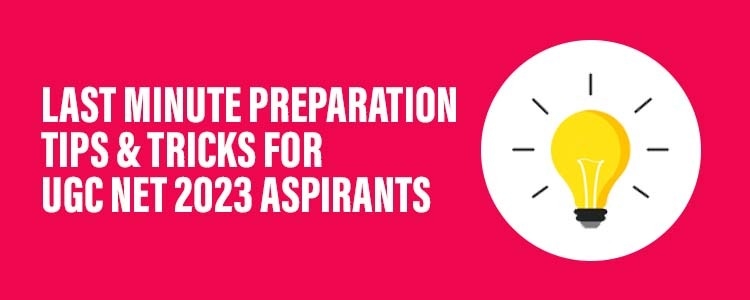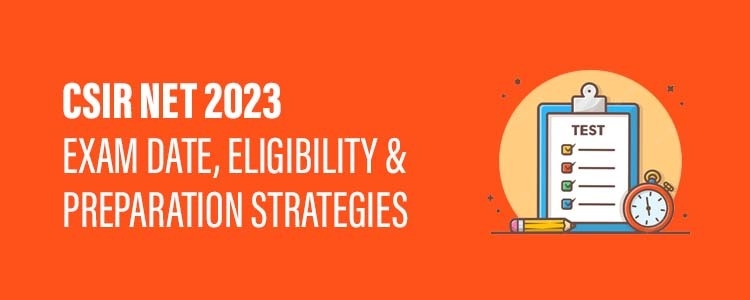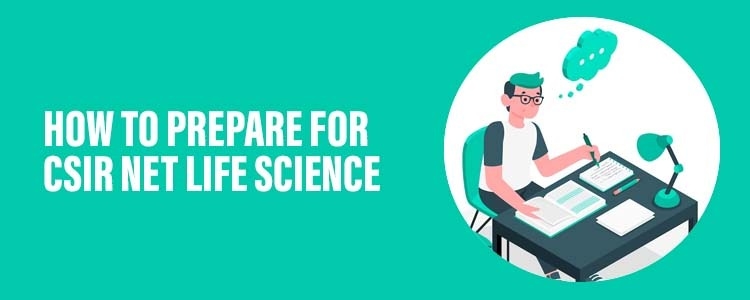2024 UGC NET Economics Online Coaching: Syllabus, Previous Year Questions

Table of Contents
UGC NET Economics Online Coaching
NET Economics Detailed Syllabus
UGC NET Economics Study Material
UGC NET Economics Previous Year Paper
Overview
Economics is one of the subjects that has scope over multiple realms of research, industries and studies. UGC NTA NET is an important qualifying exam for all eligible students. UGC NET is applicable for various job profiles such as research assistant, Assistant Professors and Junior Research Fellowship. The exam is being conducted twice every year. NTA conducted exam for June 2024 has been cancelled on the very next day of examination. UGC has declared the dates of re-examination. And the exam as per the new schedule will be in CBT mode. With a few months left for the examination, candidates should continue their preparation with perfect learning strategy. Know more about the perfect strategy to prepare from the best UGC NET Economics online coaching at Competitive Cracker.
UGC NET Economics Online Coaching
Online coaching for UGC NET Economics is one of the most efficient methods to learn. The best online classes for UGC NET Economics Coaching in Kochi, Competitive Cracker, provides top-notch sessions for eligible candidates. With experienced and efficient faculties leading live sessions, candidates can learn with great insights into the respective topics. With multiple revision sessions it is ensured that each topic taught in online sessions is thoroughly understood by students. Also, the mock tests and model exams conducted online will enhance the preparation and boost the morale of the students. Candidates will receive the result analysis in real-time. So the students are able to know which topics are they strong at and which of the topics need more focus.
NET Economics Detailed Syllabus
UGC NET Economics syllabus. It is important for candidates preparing for NET Economics to read and understand the complete syllabus. See the latest UGC NTA Economics syllabus here. The syllabus is prepared to test the knowledge of Post Graduate economics students. A pass with the UGC – NTA declared cut off mark will make the candidates eligible for various roles. With the basic cut off candidates can become Assistant professors in any UGC approved colleges and with higher cut off you will be qualified for Junior Research Fellowship.
Unit- 1 Micro Economics
- Theory of Consumer Behaviour
- Theory of Production and Costs
- Decision making under uncertainty Attitude towards Risk
- Game Theory – Non- Cooperative games
- Market Structures, competitive and non- competitive equilibria and their efficiency properties
- Factor Pricing
- General Equilibrium Analysis
- Efficiency Criteria: Pareto- Optimality, Kaldor – Hicks and Wealth Maximization
- Welfare Economics: Fundamental Theorems, Social Welfare Function
- Asymmetric Information: Adverse Selection and Moral Hazard
Unit- 2: Macro Economics
- National Income: Concepts and Measurement
- Determination of output and employment: Classical & Keynesian Approach
- Consumption Function
- Investment Function
- Multiplier and Accelerator
- Demand for Money
- Supply of Money
- IS – LM Model Approach
- Inflation and Phillips Curve Analysis
- Business Cycles
- Monetary and Fiscal Policy
- Rational Expectation Hypothesis and its critique
Unit- 3 Statistics and Econometrics
- Probability Theory: Concepts of probability, Distributions, Moments, Central Limit theorem
- Descriptive Statistics – Measures of Central tendency & dispersions, Correlation, Index Numbers
- Sampling methods & Sampling Distribution
- Statistical Inferences, Hypothesis testing
- Linear Regression Models and their properties – BLUE
- Identification Problem
- Simultaneous Equation Models – recursive and non- recursive
- Discrete choice models
- Time Series Analysis
Unit- 4 Mathematical Economics
- Sets, functions and continuity, sequence, series
- Differential Calculus and its Applications
- Linear Algebra – Matrices, Vector Spaces
- Static Optimization Problems and their applications
- Input- Output Model, Linear Programming
- Difference and Differential equations with applications
Unit- 5 International Economics
- International Trade: Basic concepts and analytical tools
- Theories of International Trade
- International Trade under imperfect competition
- Balance of Payments: Composition, Equilibrium and Disequilibrium and Adjustment Mechanisms
- Exchange Rate: Concepts and Theories
- Foreign Exchange Market and Arbitrage
- Gains from Trade, Terms of Trade, Trade Multiplier
- Tariff and Non- Tariff barriers to trade; Dumping
- GATT, WTO and Regional Trade Blocks; Trade Policy Issues
- IMF & World Bank Unit- 6 Public Economics
- Market Failure and Remedial Measures: Asymmetric Information, Public Goods, Externality
- Regulation of Market – Collusion and Consumers’ Welfare
- Public Revenue: Tax & Non- Tax Revenue, Direct & Indirect Taxes, Progressive and non- Progressive Taxation, Incidence and Effects of Taxation
- Public expenditure
- Public Debt and its management
- Public Budget and Budget Multiplier
- Fiscal Policy and its implications
Unit- 7 Money and Banking
- Components of Money Supply
- Central Bank
- Commercial Banking
- Instruments and Working of Monetary Policy
- Non- banking Financial Institutions
- Capital Market and its Regulation
Unit- 8 Growth and Development Economics
- Economic Growth and Economic Development
- Theories of Economic Development: Adam Smith, Ricardo, Marx, Schumpeter, Rostow, Balanced & Unbalanced growth, Big Push approach.
- Models of Economic Growth: Harrod- Domar, Solow, Robinson, Kaldor
- Technical progress – Disembodied & embodied; endogenous growth
- Indicators of Economic Development: PQLI, HDI, SDGs
- Poverty and Inequalities – Concepts and Measurement
- Social Sector Development: Health, Education, Gender
Unit- 9 Environmental Economics and Demography
- Environment as a Public Good
- Market Failure
- Coase Theorem
- Cost- Benefit Analysis and Compensation Criteria
- Valuation of Environmental Goods
- Theories of Population
- Concepts and Measures: Fertility, Morbidity, Mortality
- Age Structure, Demographic Dividend
- Life Table
- Migration
Unit- 10 Indian Economy
- Economic Growth in India: Pattern and Structure
- Agriculture: Pattern & Structure of Growth, Major Challenges, Policy Responses
- Industry: Pattern & Structure of Growth, Major Challenges, Policy Responses
- Services: Pattern & Structure of Growth, Major Challenges, Policy Responses
- Rural Development – Issues, Challenges & Policy Responses
- Urban Development – Issues, Challenges and Policy Responses.
- Foreign Trade: Structure and Direction, BOP, Flow of Foreign Capital, Trade Policies
- Infrastructure Development: Physical and Social; Public- Private Partnerships
- Reforms in Land, Labour and Capital Markets
- Centre- State Financial Relations and Finance Commissions of India; FRBM
- Poverty, Inequality & Unemployment
UGC NET Economics Study Material
While choosing UGC NET Economics study material candidates must be careful. Follow the study materials from trustworthy sources. The study materials prepared by platforms such as Competitive Cracker are meticulous sources to crack the exam. The best study materials for UGC NET Economics includes the precise information necessary to crack the UGC NTA NET Economics. Download study materials and continue your preparation for the upcoming UGC NTA NET exam.
UGC NET Economics Previous Year Paper
UGC NET Economics previous year paper is the best source to get insights into the syllabus and focused areas in the syllabus. Practicing on previous questions will be another exercise of revision and enhance your learning
- Which of the following are not the examples of a positive teacher - student relationship?
- A teacher who punishes students for asking questions.
- A teacher who provides students with positive feedback and constructive criticism.
- A teacher who fosters open communication and mutual respect.
- A teacher who humiliates his/her students.
- A teacher who ignores the needs and concerns of his/her students.
Choose the correct answer from the options given below:
-
- (B) and (C) Only
- (A), (D) and (E) Only
- (A), (B), (C) and (D) Only
- (B) and (E) Only
- The systematic elimination of extraneous variables, other than those you are interested in, can be done in which of the following types of research?
- Qualitative research
- Longitudinal research
- Experimental research
- Correlational research
- What number would replace question mark (?) in the series given below ?
1, 3, 6, 10, 15, 21, ?, 36, ...
-
- 32
- 28
- 29
- 30
- Anil has an MP3 file stored on His Computer. Which type of data is stored in an MP3 file?
- Video
- Sound
- Image
- Text
- Convention on Biodiversity (CBD) was opened for signature during
- Earth Summit
- Montreal Protocol
- Kyoto Protocol
- Stockholm Convention
- Which of the following tests has stationarity as the null hypothesis?
- ADF Test
- Philips Perron Test
- ERS Test
- KPSS Test
- Which of the following dimensions is included in HPI- 2 (Human Poverty Index – 2)
- Gender Inequalities
- Financial Inclusion
- Social Inclusion
- Economic Inclusion
- In case of two perfect complement goods, which following statement is not true?
- The substitution effect is zero
- The indifference curves are straight lines.
- The indifference curves are L shaped
- The goods are always demanded in fixed proportions.
- According to the Census 2011, which major Indian state is the most urbanized?
- Maharashtra
- Punjab
- Karnataka
- Tamil Nadu
- If the revenue deficit is 3% of GDP, the primary deficit is 2% of GDP and the fiscal deficit is 7% of GDP, the capital expenditure to GD P ratio of that economy would be:
- 5% of GDP
- 1% of GDP
- 4% of GDP
- 2% of GDP
|
Answer Key | |
|
Q. No. |
Ans. Code |
|
1 |
b |
|
2 |
c |
|
3 |
b |
|
4 |
b |
|
5 |
a |
|
6 |
d |
|
7 |
d |
|
8 |
b |
|
9 |
d |
|
0 |
c |
Trending Updates








